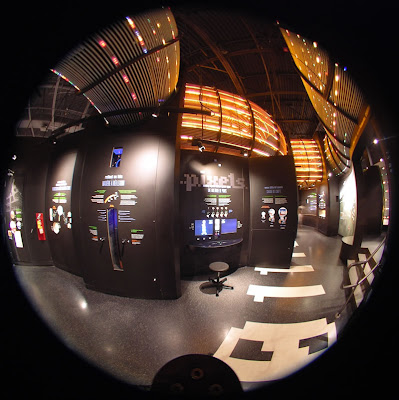 80% of my teaching assignment this year will entail American Government. One of the principles that I often emphasize is how essential transparency is to a democracy. It's the reason for the free speech and a free press. It's the reason the Supreme Court has offered special protection to political speech. Elections mean nothing without an informed electorate.
80% of my teaching assignment this year will entail American Government. One of the principles that I often emphasize is how essential transparency is to a democracy. It's the reason for the free speech and a free press. It's the reason the Supreme Court has offered special protection to political speech. Elections mean nothing without an informed electorate. I don't get on my soap box often in class, but one position I do advocate is remedying the problem of lobbying by "special interests" by bringing full transparency to the process. Besides documenting campaign donations, the amount of time our representatives meet with registered lobbyists should be a matter of public record as well. If Senator Snort has been is having his ear bent by this group or that, I'd like to know before I cast my vote.
Now, here comes the segue: I advocate transparency in the classroom, as well.
Students
Besides offering them complete syllabi and instructions, I try to explain to them why we spend time with our resources and activities. But I do not only talk to them about their goals. I come clean with mine as well. Today. I will tell them why we are engaging in Challenge Based Learning and what I hope they gain. from it. I will also let them know that I will be evaluate the process and share the results with other teachers. their education makes them the major stakeholders, but I'm deeply invested, too.
Parents
As I hope my online course descriptions show, I try to be up front with the parents as well. I tell them about myself and the course, but I share assignments and methods. As, I recenlty mentioned in my Parent Night post, I wish to give every impression that I am passionate about teaching, and that there is method to the madness of my innovations. Hopefully, this will encourage them to buy-in.
Colleagues
I've dropped the password protection on my Moodle courses and licensed any materials I've authored in the Creative Commons. This means colleagues can visit my resources and borrow freely with attribution.
Now that I have begun to give professional development presentations, I always try to share my motivations, both altruistic and selfish. For example, I have been telling audiences that I want to continue giving presentations. Of course the only way this is likely to happen is if I give good ones! In school, I've openly stated that I would like comp time to develop curriculum and help groups of teachers problem solve with technology. I don't see any harm to laying out such an agenda.
In both democracy and education I have little patience with hidden agendas.
------------------------------------------------------------
"Green Opaque Flaws" Flickr Creative Commons photo by Fubar843










